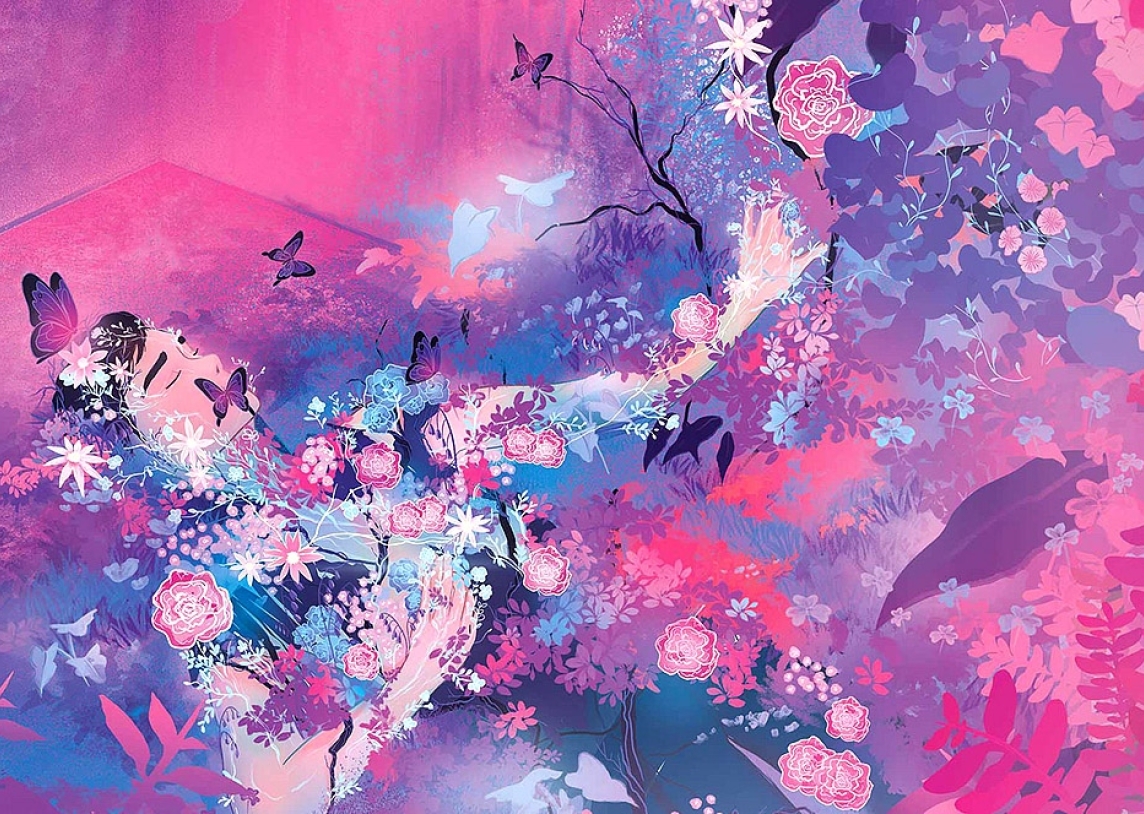News
A Puppetry of Light
In the case of performances like JTTE's Weathervanes, which consciously sit outside of traditional notions of dance and theatre, it can be a challenge for the audience or critic to understand the production's intentions or function. With a description which is, at times, allusive ('a queerbodylove project which seeks a psychological break with time and space') or affective ('summoning a sense of interiority-belonging.. through synaesthetic-blurring of senses'), it abandons familiar concepts like plot or characterisation for a sensual physicality and evocative choreography. It certainly sits within an international strand of visual theatre, relying on imagery and atmosphere to express ideas and emotions and, as such, connects to the kind of performance often programmed at manipulate, Puppet Animation Scotland's annual festival and, by association, with the puppetry that inspired the organisation's subsequent eclectic curation.
Weathervanes' refusal of easy categorisation, however, is not leavened by the company's accompanying notes: while the broad description of the experience is precise ('queer/POC performers... are raised on elevated platforms moving through light and sound in a trancelike state'), it relies heavily on dictating the experience of the audience ('a work for the feeling of Other-ness... a journey to the 'other side' of ourselves'). Explaining or exploring the experience of Weathervanes becomes a complex task that demands alternnative methods of critique that recognise the subjective nature of the spectators' response and a structure that moves beyond the familiar analysis of script, plot, performance and even meaning. Visual Theatre remains an enchanting and baffling genre.
Whether by design or accident, Weathervanes' aesthetic, depicting the human body as idealised and, if not erotic then sensual, statues speaks to the work of Johann Joachim Winckelmann (1717 - 1768), one of the founders of both scientific archaeology and modern art history. The bodies presented on their podia evoke Hellenistic models, despite their languid movements: Jian Yi's choreography is less dynamic movement vocabulary than suggestive and slow cycles. With the ambient warmth of Daniel Garcia's soundtrack and Heather Lander's light projections, the performance associates the performers' bodies with the abstraction of Hellenistic sculpture. Furthermore, Winckelmann's celebration of the homo-erotic in statuary introduces a trend in aesthetics which evolves towards the explicitly queer intentions of JTTE's work.
This association with Wincklemann, then, furthers the connection between Visual Theatre and Visual Art, between the animate and the inanimate. Through the shimmering lights of Lander and shrouded in Garcia's music, the body is present and abstracted, what the company call 'an architecture of queer futurity'. Without the explicit politics of Brecht, the sparkling darkness of Beckett or the poetic energy of Shakespeare - all products of the script - Jian Yi moves towards visual art, towards the static and fixed. Time is suspended for as long as the performance continues and the suggestive, ritualistic movement is an articulation of the piece's intention and themes (which are all that remain of the traditional theatrical elements).
If Winckelmann offers an aesthetic tradition and forges a connection to visual art, it does not necessary enable further analysis. It does suggest a conversation between the fleshly body and the statue, however. At this point, another, later Enlightenment philosopher Henrich von Kleist (1777 - 1811) appears, proferring On the Marionette Theatre. This meditation on the perfection of the puppet, in contrast to the relative gracelessness of the human, insists that the lack of self-consciousness in the marionette ensures a more impressive'proportion, flexibility, agility' than accessible by even the finest dancer: 'it was simply impossible for human beings even to attain the same level of grace as a manikin'.
The performers of Weathervanes may challenge this assertion but they do so by taking on the qualities that Kleist identifies in the marionette: atop their platforms, they transcend the friction of the earth, in a choreography that follows the pull of gravity and slows gesture to a glacial pace. Riven by the strings of Lander's light - itself a choreography of reflection and projection, sharp strands of pure white carving through the darkness - they are as if suspended on strings, their nudity emphasises the innocence and aesthetic beauty of the bodies. Not mere spectacle, each performer becomes abstracted, an idea given form, emerging from the 'dystopian/post-industrial garden of Eden' promised in the programme notes.
The history of puppetry allows a way of understanding what can be an opaque strand of performance art, often confused by the language used to describe it, or floundering in the face of traditional expectations: Weathervanes does not use puppets themselves, but permits human bodies to take on the animated quality of the marionette, challenging Kleist's rejection of human perfection and using the performers to suggest the state of purity that Kleist associated with the marionette's performance and the Garden of Eden, before knowledge of Good and Evil corrupted consciousness into selfconsciousness, or vanity. Suddenly, Weathervanes' purpose is articulated, the depiction of the human body, in its sensuality, its movement, becomes not provocative or erotic, but a manifestation of purity, of potential, of value and intrinsic grace. If queerness hurls itself against conventional or normative culture, discovering ways of being that are not limited by either social convention or established ideas of morality, it is through reconnecting the body to the puppet, the immediate and physical to the abstract and poetic, that Lander's lights and Jian Yi's choreography reframe notions of beauty, performance and value.

